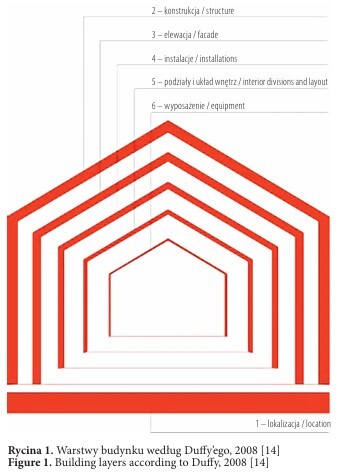Online first
Current issue
Archive
Most cited in 2024
About the Journal
Editorial Office
Editorial Board
Copyright and self-archiving policy
Information clause on the processing of personal data
Declaration of accessibility
Instructions for Authors
Instructions for Reviewers
Contact
Reviewers
2024
2023
2022
2020
2021
2019
2018
2017
2016
2015
2014
2013
Editing and translations
ORIGINAL PAPER
Layer based epidemiological quality assessment of architecture of care security and geriatric wards
1
Politechnika Wrocławska / Wrocław University of Science and Technology, Wrocław, Poland (Wydział Architektury / Faculty of Architecture)
2
Politechnika Gdańska / Gdańsk University of Technology, Gdańsk, Poland (Wydział Architektury / Faculty of Architecture)
Online publication date: 2024-06-14
Corresponding author
Wacław Szarejko
Politechnika Wrocławska, Wydział Architektury, ul. Bolesława Prusa 53/55, 50-317 Wrocław
Politechnika Wrocławska, Wydział Architektury, ul. Bolesława Prusa 53/55, 50-317 Wrocław
Med Pr Work Health Saf. 2024;75(3):199-209
KEYWORDS
hospital-acquired infectionsNew European Bauhauslayer based epidemiological assessmentarchitecturesafety of the elderlymedical facility architecture
TOPICS
ABSTRACT
Background: The article describes the potential use of an original model called the layered epidemiological assessment (warstwowa ocena epidemiologiczna – WOE) for assessing the potential risk of infections in facilities intended for elderly individuals. Material and Methods: To verify the possibility of using the WOE method for assessing epidemiological safety hazards in the built environment, available literature sources related to the legal requirements in Poland regarding the assessment of medical facility ergonomics in terms of infection transmission were analyzed. The article also referred to the guidelines of the New European Bauhaus and the Baukultur Quality System as a standardized method for assessing the quality of the built environment. The article presents the fundamental assumption of the author’s WOE method, which allows for the assessment of the risk of infection transmission separately for each component of a building. The effectiveness of the method was demonstrated by using it to assess the risk of infections in a geriatric ward room as an example. Results: The article demonstrates that by employing the WOE, it is possible to clearly differentiate potential infection routes within the analyzed facilities and assign them to specific building components. Furthermore, by applying the presented method, it is possible to define necessary procedures and develop action plans to minimize the risk of infection spread within the analyzed properties. Conclusions: The application of the WOE for evaluating architectural solutions in facilities intended for the elderly offers several benefits. The WOE method presented in the article can serve as an expert tool for quick and precise assessment of potential epidemiological hazards. An important advantage of the WOE method is its ability to be used separately for different types of epidemiological hazards characterized by different routes of infection transmission. Med Pr Work Health Saf. 2024;75(3):199–209
Share
RELATED ARTICLE
We process personal data collected when visiting the website. The function of obtaining information about users and their behavior is carried out by voluntarily entered information in forms and saving cookies in end devices. Data, including cookies, are used to provide services, improve the user experience and to analyze the traffic in accordance with the Privacy policy. Data are also collected and processed by Google Analytics tool (more).
You can change cookies settings in your browser. Restricted use of cookies in the browser configuration may affect some functionalities of the website.
You can change cookies settings in your browser. Restricted use of cookies in the browser configuration may affect some functionalities of the website.






